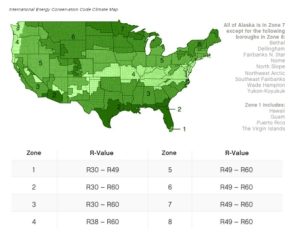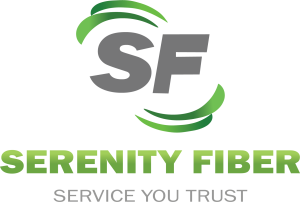FREQUENTLY ASKED QUESTIONS
Understanding Serenity Fibers® cellulose insulation will show you why it stands out as one of the top insulation options available. Whether you’re figuring out how much to use or need tips on installing it correctly, this section addresses common inquiries we receive.
Still have a question? Our Serenity Fibers support team is always happy to help.
That depends on four factors: the recommended R-value, your regional climate, your heating and cooling system type, and the part of the home you’re insulating. The U.S. Department of Energy provides a helpful map showing suggested R-values by region.

Once you’ve identified your R-value, try our blow-in insulation calculator. Just input your space’s dimensions, and Serenity Fibers will estimate how much insulation material you’ll need. dimensions of your space, and we’ll give you an estimate of the materials required to get the job done. That depends on four factors: the recommended R-value, your regional climate, your heating and cooling system type, and the part of the home you’re insulating. The U.S. Department of Energy provides a helpful map showing suggested R-values by region.
Many retailers offer the machine at no cost when you meet a minimum purchase of Serenity Fibers insulation. Even if you do need to rent it, the job is typically quick, and the overall cost remains affordable.
Serenity Fibers insulation is crafted from cellulose, a natural plant-based material primarily derived from wood pulp. Up to 85% of its content comes from post-consumer paper fiber. It’s enhanced with fire-resistant additives, and some versions are treated with boric acid to help guard against pests and moisture. Just as important is what’s not in it: Serenity Fibers insulation contains no formaldehyde, asbestos, or fibers from textiles, fiberglass, or mineral wool.
Yes. Serenity Fibers cellulose insulation holds a Class 1 fire rating from ASTM E84 testing and is approved for use as a fire block. It’s manufactured to comply with strict fire safety standards set by the U.S. Consumer Product Safety Commission. All Serenity Fibers products meet ASTM C739 and E84 requirements.
Additionally, our insulation is listed in the UL certification database as part of various fire resistance–rated building assemblies, including wall, floor, and ceiling systems. Every bag is UL-classified and carries the UL mark. Simply put, Serenity Fibers provides greater fire protection than having no insulation or using other types.
Yes. Testing under the CAN/CGSB-51.60 M-90 accelerated aging standard confirms that cellulose insulation does not lose fire resistance over time. Serenity Fibers backs this with a limited lifetime warranty that covers the durability of our fire-retardant treatment for the entire lifespan of the structure.
Serenity Fibers insulation helps block sound by sealing gaps where air and sound would normally pass. Its dense composition and ability to completely fill cavities make it highly effective at reducing noise. When densely packed or spray-applied into exterior walls, it can reduce sound power by up to 60%, helping block out traffic, aircraft, electronics, and conversation
No. Serenity Fibers insulation meets or exceeds ASTM C739 standards for corrosion resistance. It has been tested on steel, copper, and aluminum, showing no harmful effects on these metals.
Absolutely. Serenity Fibers insulation is excellent for increasing R-value by filling the spaces that older insulation may have missed. It can also be installed into uninsulated exterior walls through various techniques.
Yes. Serenity Fibers insulation is very DIY-friendly. There’s no need for lifting bulky materials or cutting pieces to size. With just two people , one at the machine and one directing the hose you can easily insulate an attic. The desired depth is simple to measure with attic rulers. You can also insulate unfilled exterior walls using techniques like the two-hole or tube method.
Need guidance? Our DIY installation guide makes it simple.
In attics, Serenity Fibers insulation may settle slightly over time until it reaches its natural stable density. This is expected, and our coverage charts already account for it. In sidewalls, there is no settling when the insulation is installed correctly.
Yes, it’s completely safe. Serenity Fibers is itch-free and contains no glass fibers, so it won’t irritate your skin during handling. While a small amount of dust may be present during installation, it’s considered a simple “nuisance” dust according to safety standards.
Generally, a vapor barrier isn’t needed with Serenity Fibers. It’s designed to perform well without one, even in warm, humid regions. The only time a vapor barrier might be necessary is in places with high humidity, like indoor pools. Our insulation is covered by a lifetime building warranty when installed by an approved contractor.
A single 25-pound bag of Serenity Fibers covers about 48.8 square feet when installed at the recommended depth.
